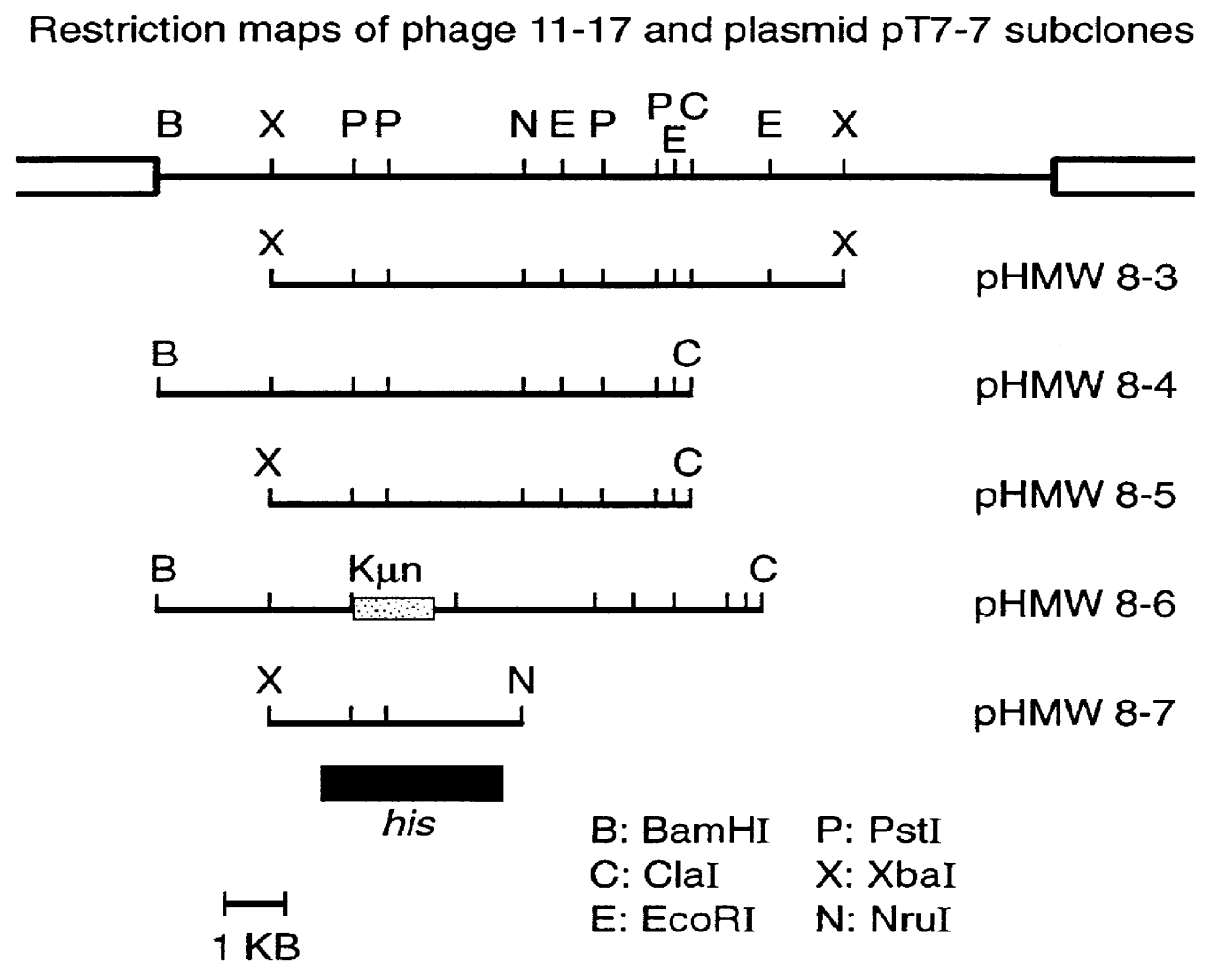Haemophilus adhesion proteins
a technology of haemophilus and adhesion proteins, applied in the field of haemophilus adhesion proteins, nucleic acids, and, can solve problems such as local diseases
- Summary
- Abstract
- Description
- Claims
- Application Information
AI Technical Summary
Problems solved by technology
Method used
Image
Examples
example
Cloning of HA1
Many protocols are substantially the same as those outlined in St. Geme et al., Mol. Microbio. 15(1):77-85 (1995).
Bacterial Strains, Plasmids, and Phages
Nontypable H. influenzae strain 11 was the clinical isolate chosen as a prototypic HMW1 / HMW2-non-expressing strain, although a variety of encapsulated typable strains can be used to clone the protein using the sequences of the figures. The organism was isolated in pure culture from the middle ear fluid of a child with acute otitis media. The strain was identified as H. influenzae by standard methods and was classified as nontypable by its failure to agglutinate with a panel of typing antisera for H. influenzae types a to f (Burroughs Wellcome Co., Research Triangle Park, North Carolina) and failure to show lines of precipitation with these antisera in counterimmunoelectrophoresis assays. Strain 11 adheres efficiently to Chang conjunctival cells in vitro, at levels comparable to those previously demonstrated for NTHI st...
PUM
| Property | Measurement | Unit |
|---|---|---|
| molecular weights | aaaaa | aaaaa |
| apparent molecular weights | aaaaa | aaaaa |
| apparent molecular weight | aaaaa | aaaaa |
Abstract
Description
Claims
Application Information
 Login to View More
Login to View More - R&D
- Intellectual Property
- Life Sciences
- Materials
- Tech Scout
- Unparalleled Data Quality
- Higher Quality Content
- 60% Fewer Hallucinations
Browse by: Latest US Patents, China's latest patents, Technical Efficacy Thesaurus, Application Domain, Technology Topic, Popular Technical Reports.
© 2025 PatSnap. All rights reserved.Legal|Privacy policy|Modern Slavery Act Transparency Statement|Sitemap|About US| Contact US: help@patsnap.com

